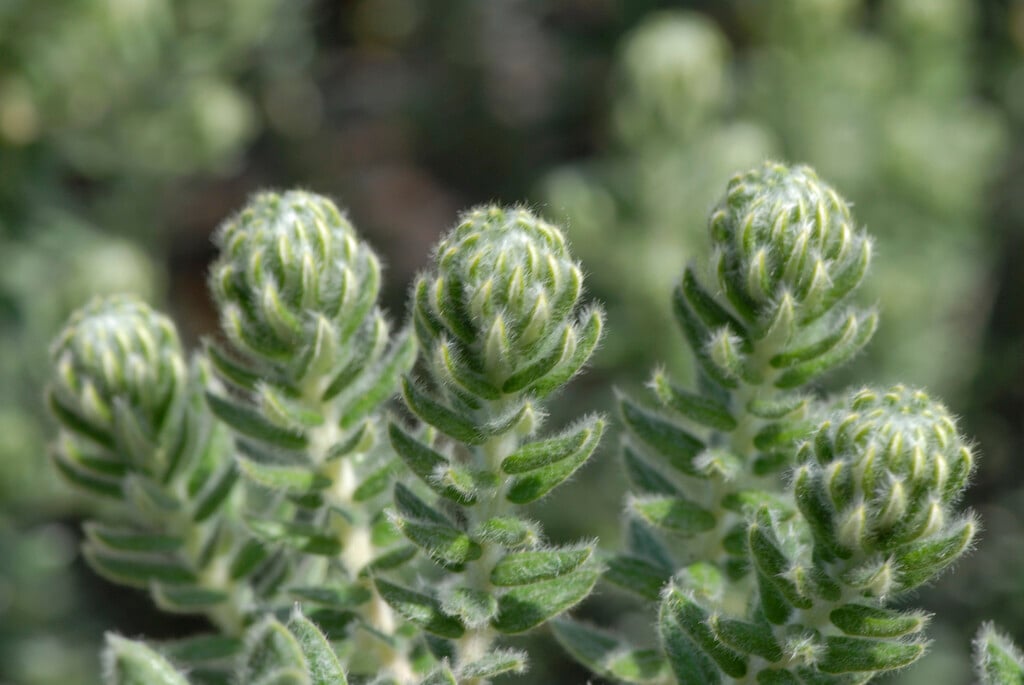Phylica arborea
An evergreen shrub or small tree, up to 5m high or more in a sheltered position but usually much shorter in cultivation. Leaves are small, narrow and dark green, and covered with fine silvery hairs, especially on the undersides. Clusters of tiny, fragrant, greenish-white flowers are produced in spring
Size
Ultimate height
1.5–2.5 metresTime to ultimate height
10–20 yearsUltimate spread
1.5–2.5 metresGrowing conditions
Moisture
Well–drainedpH
Acid, Alkaline, NeutralColour & scent
| Stem | Flower | Foliage | Fruit | |
| Spring | White Green | Green Grey Silver | ||
|---|---|---|---|---|
| Summer | Green Grey Silver | |||
| Autumn | Green Grey Silver | |||
| Winter | Green Grey Silver |
Position
- Full sun
Aspect
South–facing or West–facing
Exposure
Exposed or Sheltered Hardiness
H2Botanical details
- Family
- Rhamnaceae
- Native to GB / Ireland
- No
- Foliage
- Evergreen
- Habit
- Bushy
- Genus
Phylica are heath-like, evergreen shrubs with small, narrow leaves often with rolled edges. The tiny flowers may consist of five petal-like sepals, or have petals modified as bristles or filaments
- Name status
Correct
- Plant range
- Tristan da Cunha
How to grow
Cultivation
Grow in a warm, sunny spot in well-drained soil; will tolerate exposed and coastal sites, but shelter from cold winds. In areas prone to frost, grow in a cool greenhouse or conservatory, or in containers that can be moved indoors over winter.
Propagation
Propagate by seed sown in spring, or by softwood cuttings in early summer
Suggested planting locations and garden types
- Gravel garden
- Patio and container plants
- Conservatory and greenhouse
Pruning
No pruning required
Pests
May be susceptible to soft scale insect
Diseases
Generally disease-free
Love gardening
Sign up to receive regular gardening tips, inspiration, offers and more
View our Privacy Policy
Get involved
The Royal Horticultural Society is the UK’s leading gardening charity. We aim to enrich everyone’s life through plants, and make the UK a greener and more beautiful place.

